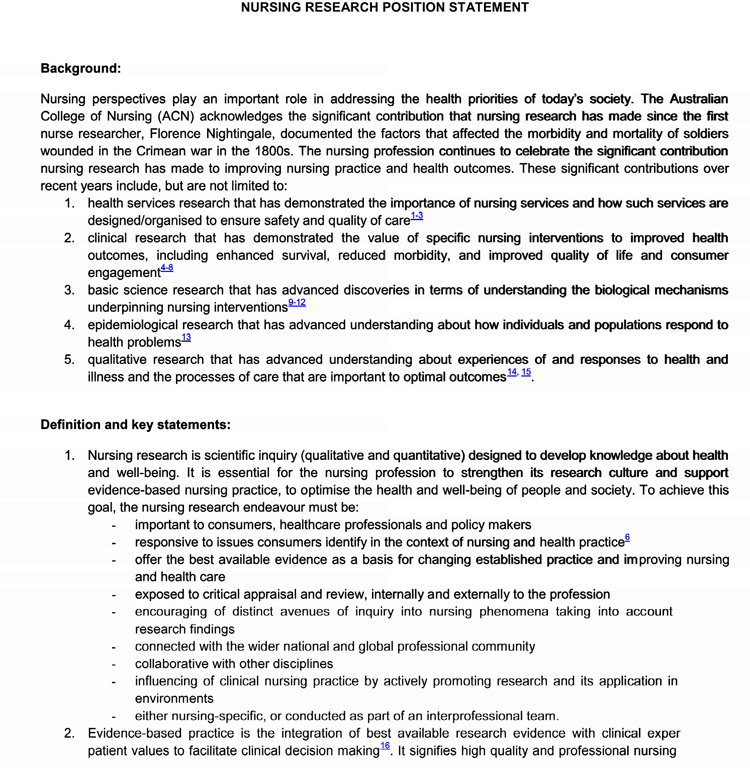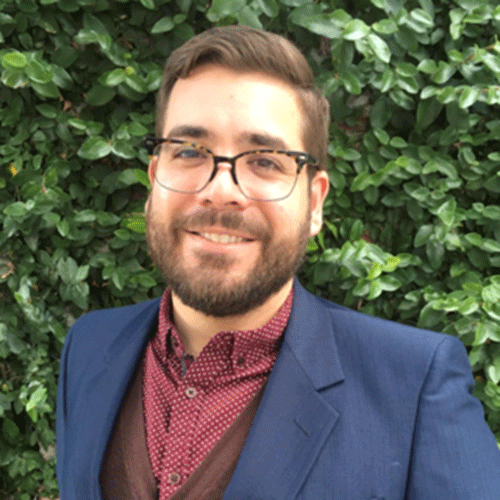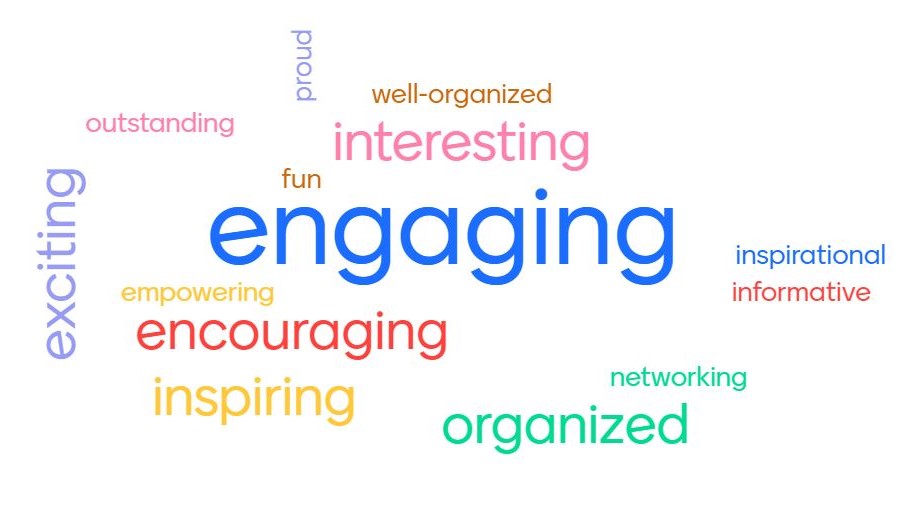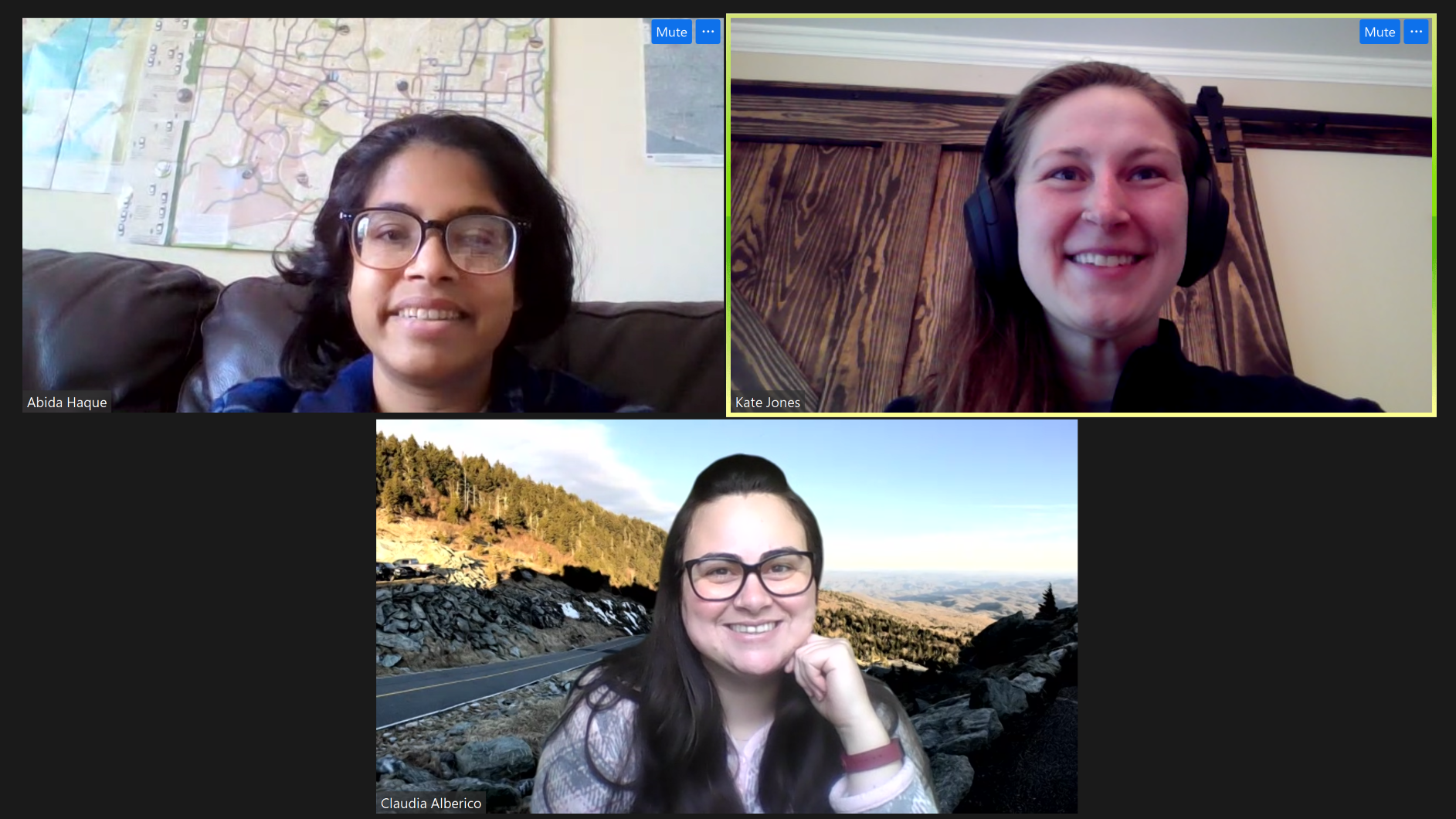WTO / Education / 11 Perfect Academic Research Statement Examples (with Guide)

11 Perfect Academic Research Statement Examples (with Guide)
Academic documents are often needed as we progress through our lives and careers. Among the most commonly used academic documents is the research statement . A research statement is usually a document not exceeding three pages that convince the board or school on a research topic. This document aims at explaining what the research you are about to conduct is about and what you hope to find out by the end of it. The document is, for the most part, short, well defined and robust.
Samples & Examples
Academic Research Statement Examples guide researchers in organizing their thoughts, presenting their ideas effectively, and highlighting the significance of their work. To further enhance convenience, here are free downloadable templates that will enable you to easily access and adapt them to suit their specific needs.

Purpose of Research Statement
The research statement is as mentioned above aimed at convincing the reader on the essence of the research you are about to start. It usually covers the main points on your plans and expected results in brief. When done properly, it should explain why you think the research is relevant, what you expect to find, what factors you plan to consider during your research, methodologies, and data collection methods , what your motivation is, and how it can benefit other academic subjects or researchers.
How a Research Statement Works for You
A research statement allows your readers to understand your potential, expertise, and skill in the field you may want to conduct your research in. By doing this; you can explain how your research can help them as well as the common good. It is used for various purposes. One common use is in helping in the hiring process.
Once a panel can determine your level of experience and expertise, they can then know whether you are a good fit to work as part of a research project. It is also a good way of gaining funding. The statement is usually an overview of a research proposal . When done right, it has the potential to encourage an investor to fund your research.
How to Write a Research Statement
For a research statement to get its message across, a good format is required, poor formatting may have you lose structure and deliver your points in a disorderly fashion. A great statement should follow the following format:
Introduction
As any other academic document, a research statement needs a good introduction. The introduction aims at defining your research agenda . This section allows you to convince your reader that you are strong and ready to embark on the research challenge. You can state your previous achievements, foundation, as well as express your passion in the subject matter. This section can detail your expertise on the research topic and any other ongoing research topics that may aid your research.
State your focus
This section works to identify the problem your research aims at solving. You can state what the problem is, why the research has not been undertaken before by other people, how you plan to work on the challenge as well as the approach you plan to use.
Importance of your research and academics
As part of convincing your reader, this section aims at making them understand how your previous experience and interests can help in the research. This section convinces your reader that you are the right person for the job.
Summarize
As part of your conclusion, this section works to summarize your earlier mentioned points. This includes your research goals and project.
Proper delivery of the statement will convince your reader of your ability to undertake the challenge as well as your long-term goals. Following the above-described flow assures a flow of information that best explains all points needed in a systematic manner.
Format of Academic Research Statements
The objective of the research statement is to introduce yourself to a search committee. Which will most likely contain scientists both in and outside your field of study, and get them excited about your research.
To encourage people to read the statement:
- Use bullets
- Make the margins a reasonable size
- Make it one or two pages long, three at most
- Use informative section headings and subheadings
- Use an easy to read font type and size
Writing a great and effective research statement is not as easy as it may sound; even the most seasoned practitioners encounter problems and challenges daily. The statement needed might seem obvious to them but difficult to describe to non-specialists. One may not have thought about how to quantify it or how to justify the required statement concerning other agencies or national priorities. A serious challenge to them might not even be on a decision maker’s radar screen.
If, at first, you fail to succeed, don’t lose hope. If your statement is not selected, try to find out why. If possible, get the reviewer’s comments. Were they able to understand your research statement? If not, what could you have done differently to make it easily understandable to them? Did they consider it as a good statement but not a top priority or high potential payoff? Do not be embarrassed or discouraged by constructive reviews; they are the best guidance you can get to write better statements .
About This Article

Was this helpful?
Great! Tell us more about your experience
Not up to par help us fix it, keep reading.

Education , Statements
36 strong thesis statement examples and templates.

6 Great Teaching Personal Statement Examples (How to Write)

Business , Education , Planners
30 free storyboard templates – examples.

Charts , Graphics
Free 24-hour military time charts – printable.

How to Structure Informative Speech | Outline Examples
Thank you for your feedback.
Your Voice, Our Progress. Your feedback matters a lot to us.
Purdue Online Writing Lab Purdue OWL® College of Liberal Arts
Graduate School Applications: Writing a Research Statement

Welcome to the Purdue OWL
This page is brought to you by the OWL at Purdue University. When printing this page, you must include the entire legal notice.
Copyright ©1995-2018 by The Writing Lab & The OWL at Purdue and Purdue University. All rights reserved. This material may not be published, reproduced, broadcast, rewritten, or redistributed without permission. Use of this site constitutes acceptance of our terms and conditions of fair use.
What is a Research Statement?
A research statement is a short document that provides a brief history of your past research experience, the current state of your research, and the future work you intend to complete.
The research statement is a common component of a potential candidate’s application for post-undergraduate study. This may include applications for graduate programs, post-doctoral fellowships, or faculty positions. The research statement is often the primary way that a committee determines if a candidate’s interests and past experience make them a good fit for their program/institution.
What Should It Look Like?
Research statements are generally one to two single-spaced pages. You should be sure to thoroughly read and follow the length and content requirements for each individual application.
Your research statement should situate your work within the larger context of your field and show how your works contributes to, complicates, or counters other work being done. It should be written for an audience of other professionals in your field.
What Should It Include?
Your statement should start by articulating the broader field that you are working within and the larger question or questions that you are interested in answering. It should then move to articulate your specific interest.
The body of your statement should include a brief history of your past research . What questions did you initially set out to answer in your research project? What did you find? How did it contribute to your field? (i.e. did it lead to academic publications, conferences, or collaborations?). How did your past research propel you forward?
It should also address your present research . What questions are you actively trying to solve? What have you found so far? How are you connecting your research to the larger academic conversation? (i.e. do you have any publications under review, upcoming conferences, or other professional engagements?) What are the larger implications of your work?
Finally, it should describe the future trajectory on which you intend to take your research. What further questions do you want to solve? How do you intend to find answers to these questions? How can the institution to which you are applying help you in that process? What are the broader implications of your potential results?
Note: Make sure that the research project that you propose can be completed at the institution to which you are applying.
Other Considerations:
- What is the primary question that you have tried to address over the course of your academic career? Why is this question important to the field? How has each stage of your work related to that question?
- Include a few specific examples that show your success. What tangible solutions have you found to the question that you were trying to answer? How have your solutions impacted the larger field? Examples can include references to published findings, conference presentations, or other professional involvement.
- Be confident about your skills and abilities. The research statement is your opportunity to sell yourself to an institution. Show that you are self-motivated and passionate about your project.
- Enhancing Student Success
- Innovative Research
- Alumni Success
- About NC State
How to Construct a Compelling Research Statement

A research statement is a critical document for prospective faculty applicants. This document allows applicants to convey to their future colleagues the importance and impact of their past and, most importantly, future research. You as an applicant should use this document to lay out your planned research for the next few years, making sure to outline how your planned research contributes to your field.
Some general guidelines
(from Carleton University )
An effective research statement accomplishes three key goals:
- It clearly presents your scholarship in nonspecialist terms;
- It places your research in a broader context, scientifically and societally; and
- It lays out a clear road map for future accomplishments in the new setting (the institution to which you’re applying).
Another way to think about the success of your research statement is to consider whether, after reading it, a reader is able to answer these questions:
- What do you do (what are your major accomplishments; what techniques do you use; how have you added to your field)?
- Why is your work important (why should both other scientists and nonscientists care)?
- Where is it going in the future (what are the next steps; how will you carry them out in your new job; does your research plan meet the requirements for tenure at this institution)?
1. Make your statement reader-friendly
A typical faculty application call can easily receive 200+ applicants. As such, you need to make all your application documents reader-friendly. Use headings and subheadings to organize your ideas and leave white space between sections.
In addition, you may want to include figures and diagrams in your research statement that capture key findings or concepts so a reader can quickly determine what you are studying and why it is important. A wall of text in your research statement should be avoided at all costs. Rather, a research statement that is concise and thoughtfully laid out demonstrates to hiring committees that you can organize ideas in a coherent and easy-to-understand manner.
Also, this presentation demonstrates your ability to develop competitive funding applications (see more in next section), which is critical for success in a research-intensive faculty position.
2. Be sure to touch on the fundability of your planned research work
Another goal of your research statement is to make the case for why your planned research is fundable. You may get different opinions here, but I would recommend citing open or planned funding opportunities at federal agencies or other funders that you plan to submit to. You might also use open funding calls as a way to demonstrate that your planned research is in an area receiving funding prioritization by various agencies.
If you are looking for funding, check out this list of funding resources on my personal website. Another great way to look for funding is to use NIH Reporter and NSF award search .
3. Draft the statement and get feedback early and often
I can tell you from personal experience that it takes time to refine a strong research statement. I went on the faculty job market two years in a row and found my second year materials to be much stronger. You need time to read, review and reflect on your statements and documents to really make them stand out.
It is important to have your supervisor and other faculty read and give feedback on your critical application documents and especially your research statement. Also, finding peers to provide feedback and in return giving them feedback on their documents is very helpful. Seek out communities of support such as Future PI Slack to find peer reviewers (and get a lot of great application advice) if needed.
4. Share with nonexperts to assess your writing’s clarity
Additionally, you may want to consider sharing your job materials, including your research statement, with non-experts to assess clarity. For example, NC State’s Professional Development Team offers an Academic Packways: Gearing Up for Faculty program each year where you can get feedback on your application documents from individuals working in a variety of areas. You can also ask classmates and colleagues working in different areas to review your research statement. The more feedback you can receive on your materials through formal or informal means, the better.
5. Tailor your statement to the institution
It is critical in your research statement to mention how you will make use of core facilities or resources at the institution you are applying to. If you need particular research infrastructure to do your work and the institution has it, you should mention that in your statement. Something to the effect of: “The presence of the XXX core facility at YYY University will greatly facilitate my lab’s ability to investigate this important process.”
Mentioning core facilities and resources at the target institution shows you have done your research, which is critical in demonstrating your interest in that institution.
Finally, think about the resources available at the institution you are applying to. If you are applying to a primarily undergraduate-serving institution, you will want to be sure you propose a research program that could reasonably take place with undergraduate students, working mostly in the summer and utilizing core facilities that may be limited or require external collaborations.
Undergraduate-serving institutions will value research projects that meaningfully involve students. Proposing overly ambitious research at a primarily undergraduate institution is a recipe for rejection as the institution will read your application as out of touch … that either you didn’t do the work to research them or that you are applying to them as a “backup” to research-intensive positions.
You should carefully think about how to restructure your research statements if you are applying to both primarily undergraduate-serving and research-intensive institutions. For examples of how I framed my research statement for faculty applications at each type of institution, see my personal website ( undergraduate-serving ; research-intensive research statements).
6. Be yourself, not who you think the search committee wants
In the end, a research statement allows you to think critically about where you see your research going in the future. What are you excited about studying based on your previous work? How will you go about answering the unanswered questions in your field? What agencies and initiatives are funding your type of research? If you develop your research statement from these core questions, your passion and commitment to the work will surely shine through.
A closing thought: Be yourself, not who you think the search committee wants. If you try to frame yourself as someone you really aren’t, you are setting the hiring institution and you up for disappointment. You want a university to hire you because they like you, the work you have done, and the work you want to do, not some filtered or idealized version of you.
So, put your true self out there, and realize you want to find the right institutional fit for you and your research. This all takes time and effort. The earlier you start and the more reflection and feedback you get on your research statement and remaining application documents, the better you can present the true you to potential employers.

More Advice on Faculty Job Application Documents on ImPACKful
How to write a better academic cover letter
Tips on writing an effective teaching statement
More Resources
See here for samples of a variety of application materials from UCSF.
- Rules of the (Social Sciences & Humanities) Research Statement
- CMU’s Writing a Research Statement
- UW’s Academic Careers: Research Statements
- Developing a Winning Research Statement (UCSF)
- Academic Packways
- ImPACKful Tips
Leave a Response Cancel reply
Your email address will not be published. All fields are required.
Save my name, email, and website in this browser for the next time I comment.
This site uses Akismet to reduce spam. Learn how your comment data is processed .
More From The Graduate School

Advice From Newly Hired Assistant Professors

Virtual Postdoc Research Symposium Elevates and Supports Postdoctoral Scholars Across North Carolina

Expand Your Pack: Start or Join an Online Writing Group!
- Undergraduate Students
- Masters Students
- PhD/Doctoral Students
- Postdoctoral Scholars
- Faculty & Staff
- Families & Supporters
- Prospective Students
- Explore Your Interests / Self-Assessment
- Build Your Network / LinkedIn
- Search for a Job / Internship
- Create a Resume / Cover Letter
- Prepare for an Interview
- Negotiate an Offer
- Prepare for Graduate School
- Professionalism
- Search for a Job or Internship
- Prepare for the Academic Job Market
- Advertising, Marketing, and Public Relations
- Arts & Entertainment
- Consulting & Financial Services
- Engineering & Technology
- Government, Law & Policy
- Hospitality
- Management & Human Resources
- Non-Profit, Social Justice & Education
- Retail & Consumer Services
- BIPOC Students & Scholars
- Current & Former Foster Youth
- Disabled Students & Scholars
- First-Generation Students & Scholars
- Formerly Incarcerated Students & Scholars
- International Students & Scholars
- LGBTQ+ Students & Scholars
- Student Athletes
- Students & Scholars with Dependents
- Transfer Students
- Undocumented Students & Scholars
- Women-Identifying Students & Scholars
Research Statements
- Share This: Share Research Statements on Facebook Share Research Statements on LinkedIn Share Research Statements on X
A research statement is used when applying for some academic faculty positions and research-intensive positions. A research statement is usually a single-spaced 1-2 page document that describes your research trajectory as a scholar, highlighting growth: from where you began to where you envision going in the next few years. Ultimately, research productivity, focus and future are the most highly scrutinized in academic faculty appointments, particularly at research-intensive universities. Tailor your research statement to the institution to which you are applying – if a university has a strong research focus, emphasize publications; if a university values teaching and research equally, consider ending with a paragraph about how your research complements your teaching and vice versa. Structures of these documents also varies by discipline. See two common structures below.
Structure One:
Introduction: The first paragraph should introduce your research interests in the context of your field, tying the research you have done so far to a distinct trajectory that will take you well into the future.
Summary Of Dissertation: This paragraph should summarize your doctoral research project. Try not to have too much language repetition across documents, such as your abstract or cover letter.
Contribution To Field And Publications: Describe the significance of your projects for your field. Detail any publications initiated from your independent doctoral or postdoctoral research. Additionally, include plans for future publications based on your thesis. Be specific about journals to which you should submit or university presses that might be interested in the book you could develop from your dissertation (if your field expects that). If you are writing a two-page research statement, this section would likely be more than one paragraph and cover your future publication plans in greater detail.
Second Project: If you are submitting a cover letter along with your research statement, then the committee may already have a paragraph describing your second project. In that case, use this space to discuss your second project in greater depth and the publication plans you envision for this project. Make sure you transition from your dissertation to your second large project smoothly – you want to give a sense of your cohesion as a scholar, but also to demonstrate your capacity to conceptualize innovative research that goes well beyond your dissertation project.
Wider Impact Of Research Agenda: Describe the broader significance of your work. What ties your research projects together? What impact do you want to make on your field? If you’re applying for a teaching-oriented institution, how would you connect your research with your teaching?
Structure Two:
25% Previous Research Experience: Describe your early work and how it solidified your interest in your field. How did these formative experiences influence your research interests and approach to research? Explain how this earlier work led to your current project(s).
25% Current Projects: Describe your dissertation/thesis project – this paragraph could be modeled on the first paragraph of your dissertation abstract since it covers all your bases: context, methodology, findings, significance. You could also mention grants/fellowships that funded the project, publications derived from this research, and publications that are currently being developed.
50% Future Work: Transition to how your current work informs your future research. Describe your next major project or projects and a realistic plan for accomplishing this work. What publications do you expect to come out of this research? The last part of the research statement should be customized to demonstrate the fit of your research agenda with the institution.
- PRO Courses Guides New Tech Help Pro Expert Videos About wikiHow Pro Upgrade Sign In
- EDIT Edit this Article
- EXPLORE Tech Help Pro About Us Random Article Quizzes Request a New Article Community Dashboard This Or That Game Happiness Hub Popular Categories Arts and Entertainment Artwork Books Movies Computers and Electronics Computers Phone Skills Technology Hacks Health Men's Health Mental Health Women's Health Relationships Dating Love Relationship Issues Hobbies and Crafts Crafts Drawing Games Education & Communication Communication Skills Personal Development Studying Personal Care and Style Fashion Hair Care Personal Hygiene Youth Personal Care School Stuff Dating All Categories Arts and Entertainment Finance and Business Home and Garden Relationship Quizzes Cars & Other Vehicles Food and Entertaining Personal Care and Style Sports and Fitness Computers and Electronics Health Pets and Animals Travel Education & Communication Hobbies and Crafts Philosophy and Religion Work World Family Life Holidays and Traditions Relationships Youth
- Browse Articles
- Learn Something New
- Quizzes Hot
- Happiness Hub
- This Or That Game
- Train Your Brain
- Explore More
- Support wikiHow
- About wikiHow
- Log in / Sign up
- Education and Communications
How to Write a Research Statement
Last Updated: April 25, 2024 Fact Checked
This article was co-authored by Christopher Taylor, PhD . Christopher Taylor is an Adjunct Assistant Professor of English at Austin Community College in Texas. He received his PhD in English Literature and Medieval Studies from the University of Texas at Austin in 2014. There are 7 references cited in this article, which can be found at the bottom of the page. This article has been fact-checked, ensuring the accuracy of any cited facts and confirming the authority of its sources. This article has been viewed 68,667 times.
The research statement is a very common component of job applications in academia. The statement provides a summary of your research experience, interests, and agenda for reviewers to use to assess your candidacy for a position. Because the research statement introduces you as a researcher to the people reviewing your job application, it’s important to make the statement as impressive as possible. After you’ve planned out what you want to say, all you have to do is write your research statement with the right structure, style, and formatting!
Research Statement Outline and Example

Planning Your Research Statement

- For example, some of the major themes of your research might be slavery and race in the 18th century, the efficacy of cancer treatments, or the reproductive cycles of different species of crab.
- You may have several small questions that guide specific aspects of your research. Write all of these questions out, then see if you can formulate a broader question that encapsulates all of these smaller questions.

- For example, if your work is on x-ray technology, describe how your research has filled any knowledge gaps in your field, as well as how it could be applied to x-ray machines in hospitals.
- It’s important to be able to articulate why your research should matter to people who don’t study what you study to generate interest in your research outside your field. This is very helpful when you go to apply for grants for future research.

- Explain why these are the things you want to research next. Do your best to link your prior research to what you hope to study in the future. This will help give your reviewer a deeper sense of what motivates your research and why it matters.

- For example, if your research was historical and the documents you needed to answer your question didn’t exist, describe how you managed to pursue your research agenda using other types of documents.

- Some skills you might be able to highlight include experience working with digital archives, knowledge of a foreign language, or the ability to work collaboratively. When you're describing your skills, use specific, action-oriented words, rather than just personality traits. For example, you might write "speak Spanish" or "handled digital files."
- Don’t be modest about describing your skills. You want your research statement to impress whoever is reading it.
Structuring and Writing the Statement

- Because this section summarizes the rest of your research statement, you may want to write the executive summary after you’ve written the other sections first.
- Write your executive summary so that if the reviewer chooses to only read this section instead of your whole statement, they will still learn everything they need to know about you as an applicant.
- Make sure that you only include factual information that you can prove or demonstrate. Don't embellish or editorialize your experience to make it seem like it's more than it is.

- If you received a postdoctoral fellowship, describe your postdoc research in this section as well.
- If at all possible, include research in this section that goes beyond just your thesis or dissertation. Your application will be much stronger if reviewers see you as a researcher in a more general sense than as just a student.

- Again, as with the section on your graduate research, be sure to include a description of why this research matters and what relevant skills you bring to bear on it.
- If you’re still in graduate school, you can omit this section.

- Be realistic in describing your future research projects. Don’t describe potential projects or interests that are extremely different from your current projects. If all of your research to this point has been on the American civil war, future research projects in microbiology will sound very farfetched.

- For example, add a sentence that says “Dr. Jameson’s work on the study of slavery in colonial Georgia has served as an inspiration for my own work on slavery in South Carolina. I would welcome the opportunity to be able to collaborate with her on future research projects.”

- For example, if your research focuses on the history of Philadelphia, add a sentence to the paragraph on your future research projects that says, “I believe based on my work that I would be a very strong candidate to receive a Balch Fellowship from the Historical Society of Pennsylvania.”
- If you’ve received funding for your research in the past, mention this as well.

- Typically, your research statement should be about 1-2 pages long if you're applying for a humanities or social sciences position. For a position in psychology or the hard sciences, your research statement may be 3-4 pages long.
- Although you may think that having a longer research statement makes you seem more impressive, it’s more important that the reviewer actually read the statement. If it seems too long, they may just skip it, which will hurt your application.
Formatting and Editing

- For example, instead of saying, “This part of my research was super hard,” say, “I found this obstacle to be particularly challenging.”

- For example, if your research is primarily in anthropology, refrain from using phrases like “Gini coefficient” or “moiety.” Only use phrases that someone in a different field would probably be familiar with, such as “cultural construct,” “egalitarian,” or “social division.”
- If you have trusted friends or colleagues in fields other than your own, ask them to read your statement for you to make sure you don’t use any words or concepts that they can’t understand.

- For example, when describing your dissertation, say, “I hypothesized that…” When describing your future research projects, say, “I intend to…” or “My aim is to research…”

- At the same time, don’t make your font too big. If you write your research statement in a font larger than 12, you run the risk of appearing unprofessional.

- For instance, if you completed a postdoc, use subheadings in the section on previous research experience to delineate the research you did in graduate school and the research you did during your fellowship.

Expert Q&A
You might also like.

- ↑ https://owl.purdue.edu/owl/general_writing/graduate_school_applications/writing_a_research_statement.html
- ↑ https://www.cmu.edu/student-success/other-resources/handouts/comm-supp-pdfs/writing-research-statement.pdf
- ↑ https://postdocs.cornell.edu/research-statement
- ↑ https://gradschool.cornell.edu/academic-progress/pathways-to-success/prepare-for-your-career/take-action/research-statement/
- ↑ https://libguides.usc.edu/writingguide/executivesummary
- ↑ https://www.niu.edu/writingtutorial/style/formal-and-informal-style.shtml
- ↑ https://www.unr.edu/writing-speaking-center/student-resources/writing-speaking-resources/editing-and-proofreading-techniques
About This Article

- Send fan mail to authors
Reader Success Stories
Apr 24, 2022
Did this article help you?

Featured Articles

Trending Articles

Watch Articles

- Terms of Use
- Privacy Policy
- Do Not Sell or Share My Info
- Not Selling Info
wikiHow Tech Help Pro:
Level up your tech skills and stay ahead of the curve

How to Write a Research Statement
- Experimental Psychology
Task #1: Understand the Purpose of the Research Statement
The primary mistake people make when writing a research statement is that they fail to appreciate its purpose. The purpose isn’t simply to list and briefly describe all the projects that you’ve completed, as though you’re a museum docent and your research publications are the exhibits. “Here, we see a pen and watercolor self-portrait of the artist. This painting is the earliest known likeness of the artist. It captures the artist’s melancholic temperament … Next, we see a steel engraving. This engraving has appeared in almost every illustrated publication of Mary Shelley’s Frankenstein and has also appeared as the television studio back-drop for the …”
Similar to touring through a museum, we’ve read through research statements that narrate a researcher’s projects: “My dissertation examined the ways in which preschool-age children’s memory for a novel event was shaped by the verbal dialogue they shared with trained experimenters. The focus was on the important use of what we call elaborative conversational techniques … I have recently launched another project that represents my continued commitment to experimental methods and is yet another extension of the ways in which we can explore the role of conversational engagement during novel events … In addition to my current experimental work, I am also involved in a large-scale collaborative longitudinal project …”
Treating your research statement as though it’s a narrated walk through your vita does let you describe each of your projects (or publications). But the format is boring, and the statement doesn’t tell us much more than if we had the abstracts of each of your papers. Most problematic, treating your research statement as though it’s a narrated walk through your vita misses the primary purpose of the research statement, which is to make a persuasive case about the importance of your completed work and the excitement of your future trajectory.
Writing a persuasive case about your research means setting the stage for why the questions you are investigating are important. Writing a persuasive case about your research means engaging your audience so that they want to learn more about the answers you are discovering. How do you do that? You do that by crafting a coherent story.
Task #2: Tell a Story
Surpass the narrated-vita format and use either an Op-Ed format or a Detective Story format. The Op-Ed format is your basic five-paragraph persuasive essay format:
First paragraph (introduction):
- broad sentence or two introducing your research topic;
- thesis sentence, the position you want to prove (e.g., my research is important); and
- organization sentence that briefly overviews your three bodies of evidence (e.g., my research is important because a, b, and c).
Second, third, and fourth paragraphs (each covering a body of evidence that will prove your position):
- topic sentence (about one body of evidence);
- fact to support claim in topic sentence;
- another fact to support claim in topic sentence;
- another fact to support claim in topic sentence; and
- analysis/transition sentence.
Fifth paragraph (synopsis and conclusion):
- sentence that restates your thesis (e.g., my research is important);
- three sentences that restate your topic sentences from second, third, and fourth paragraph (e.g., my research is important because a, b, and c); and
- analysis/conclusion sentence.
Although the five-paragraph persuasive essay format feels formulaic, it works. It’s used in just about every successful op-ed ever published. And like all good recipes, it can be doubled. Want a 10-paragraph, rather than five-paragraph research statement? Double the amount of each component. Take two paragraphs to introduce the point you’re going to prove. Take two paragraphs to synthesize and conclude. And in the middle, either raise six points of evidence, with a paragraph for each, or take two paragraphs to supply evidence for each of three points. The op-ed format works incredibly well for writing persuasive essays, which is what your research statement should be.
The Detective Story format is more difficult to write, but it’s more enjoyable to read. Whereas the op-ed format works off deductive reasoning, the Detective Story format works off inductive reasoning. The Detective Story does not start with your thesis statement (“hire/retain/promote/ award/honor me because I’m a talented developmental/cognitive/social/clinical/biological/perception psychologist”). Rather, the Detective Story starts with your broad, overarching research question. For example, how do babies learn their native languages? How do we remember autobiographical information? Why do we favor people who are most similar to ourselves? How do we perceive depth? What’s the best way to treat depression? How does the stress we experience every day affect our long-term health?
Because it’s your research statement, you can personalize that overarching question. A great example of a personalized overarching question occurs in the opening paragraph of George Miller’s (1956) article, “The Magical Number Seven, Plus or Minus Two: Some Limits on Our Capacity for Processing Information.”
My problem is that I have been persecuted by an integer. For seven years this number has followed me around, has intruded in my most private data, and has assaulted me from the pages of our most public journals. This number assumes a variety of disguises, being sometimes a little larger and sometimes a little smaller than usual, but never changing so much as to be unrecognizable. The persistence with which this number plagues me is far more than a random accident. There is, to quote a famous senator, a design behind it, some pattern governing its appearances. Either there really is something unusual about the number or else I am suffering from delusions of persecution. I shall begin my case history by telling you about some experiments that tested how accurately people can assign numbers to the magnitudes of various aspects of a stimulus. …
In case you think the above opening was to a newsletter piece or some other low-visibility outlet, it wasn’t. Those opening paragraphs are from a Psych Review article, which has been cited nearly 16,000 times. Science can be personalized. Another example of using the Detective Story format, which opens with your broad research question and personalizes it, is the opening paragraph of a research statement from a chemist:
I became interested in inorganic chemistry because of one element: Boron. The cage structures and complexity of boron hydrides have fascinated my fellow Boron chemists for more than 40 years — and me for more than a decade. Boron is only one element away from carbon, yet its reactivity is dramatically different. I research why.
When truest to the genre of Detective Story format, the full answer to your introductory question won’t be available until the end of your statement — just like a reader doesn’t know whodunit until the last chapter of a mystery. Along the way, clues to the answer are provided, and false leads are ruled out, which keeps readers turning the pages. In the same way, writing your research statement in the Detective Story format will keep members of the hiring committee, the review committee, and the awards panel reading until the last paragraph.
Task #3: Envision Each Audience
The second mistake people make when writing their research statements is that they write for the specialist, as though they’re talking to another member of their lab. But in most cases, the audience for your research statement won’t be well-informed specialists. Therefore, you need to convey the importance of your work and the contribution of your research without getting bogged down in jargon. Some details are important, but an intelligent reader outside your area of study should be able to understand every word of your research statement.
Because research statements are most often included in academic job applications, tenure and promotion evaluations, and award nominations, we’ll talk about how to envision the audiences for each of these contexts.
Job Applications . Even in the largest department, it’s doubtful that more than a couple of people will know the intricacies of your research area as well as you do. And those two or three people are unlikely to have carte blanche authority on hiring. Rather, in most departments, the decision is made by the entire department. In smaller departments, there’s probably no one else in your research area; that’s why they have a search going on. Therefore, the target audience for your research statement in a job application comprises other psychologists, but not psychologists who study what you study (the way you study it).
Envision this target audience explicitly.Think of one of your fellow graduate students or post docs who’s in another area (e.g., if you’re in developmental, think of your friend in biological). Envision what that person will — and won’t — know about the questions you’re asking in your research, the methods you’re using, the statistics you’re employing, and — most importantly — the jargon that you usually use to describe all of this. Write your research statement so that this graduate student or post doc in another area in psychology will not only understand your research statement, but also find your work interesting and exciting.
Tenure Review . During the tenure review process, your research statement will have two target audiences: members of your department and, if your tenure case receives a positive vote in the department, members of the university at large. For envisioning the first audience, follow the advice given above for writing a research statement for a job application. Think of one of your departmental colleagues in another area (e.g., if you’re in developmental, think of your friend in biological). Write in such a way that the colleague in another area in psychology will understand every word — and find the work interesting. (This advice also applies to writing research statements for annual reviews, for which the review is conducted in the department and usually by all members of the department.)
For the second stage of the tenure process, when your research statement is read by members of the university at large, you’re going to have to scale it down a notch. (And yes, we are suggesting that you write two different statements: one for your department’s review and one for the university’s review, because the audiences differ. And you should always write with an explicit target audience in mind.) For the audience that comprises the entire university, envision a faculty friend in another department. Think political science or economics or sociology, because your statement will be read by political scientists, economists, and sociologists. It’s an art to hit the perfect pitch of being understood by such a wide range of scholars without being trivial, but it’s achievable.
Award Nominations . Members of award selection committees are unlikely to be specialists in your immediate field. Depending on the award, they might not even be members of your discipline. Find out the typical constitution of the selection committee for each award nomination you submit, and tailor your statement accordingly.
Task #4: Be Succinct
When writing a research statement, many people go on for far too long. Consider three pages a maximum, and aim for two. Use subheadings to help break up the wall of text. You might also embed a well-designed figure or graph, if it will help you make a point. (If so, use wrap-around text, and make sure that your figure has its axes labeled.)
And don’t use those undergraduate tricks of trying to cram more in by reducing the margins or the font size. Undoubtedly, most of the people reading your research statement will be older than you, and we old folks don’t like reading small fonts. It makes us crabby, and that’s the last thing you want us to be when we’re reading your research statement.
Nice piece of information. I will keep in mind while writing my research statement
Thank you so much for your guidance.
HOSSEIN DIVAN-BEIGI
Absolutely agree! I also want to add that: On the one hand it`s easy to write good research personal statement, but on the other hand it`s a little bit difficult to summarize all minds and as result the main idea of the statement could be incomprehensible. It also seems like a challenge for those guys, who aren`t native speakers. That`s why you should prepare carefully for this kind of statement to target your goals.
How do you write an action research topic?? An then stAte the problem an purpose for an action research. Can I get an example on language development?? Please I need some help.
Thankyou I now have idea to come up with the research statement. If I need help I will inform you …
much appreciated
Just like Boote & Beile (2005) explained “Doctors before researchers” because of the importance of the dissertation literature review in research groundwork.
APS regularly opens certain online articles for discussion on our website. Effective February 2021, you must be a logged-in APS member to post comments. By posting a comment, you agree to our Community Guidelines and the display of your profile information, including your name and affiliation. Any opinions, findings, conclusions, or recommendations present in article comments are those of the writers and do not necessarily reflect the views of APS or the article’s author. For more information, please see our Community Guidelines .
Please login with your APS account to comment.
About the Authors
Morton Ann Gernsbacher , APS Past President, is the Vilas Research Professor and Sir Frederic Bartlett Professor at the University of Wisconsin-Madison. She can be contacted at [email protected] . Patricia G. Devine , a Past APS Board Member, is Chair of the Department of Psychology at the University of Wisconsin-Madison. She can be contacted at [email protected] .

Careers Up Close: Joel Anderson on Gender and Sexual Prejudices, the Freedoms of Academic Research, and the Importance of Collaboration
Joel Anderson, a senior research fellow at both Australian Catholic University and La Trobe University, researches group processes, with a specific interest on prejudice, stigma, and stereotypes.

Experimental Methods Are Not Neutral Tools
Ana Sofia Morais and Ralph Hertwig explain how experimental psychologists have painted too negative a picture of human rationality, and how their pessimism is rooted in a seemingly mundane detail: methodological choices.
APS Fellows Elected to SEP
In addition, an APS Rising Star receives the society’s Early Investigator Award.
Privacy Overview
| Cookie | Duration | Description |
|---|---|---|
| __cf_bm | 30 minutes | This cookie, set by Cloudflare, is used to support Cloudflare Bot Management. |
| Cookie | Duration | Description |
|---|---|---|
| AWSELBCORS | 5 minutes | This cookie is used by Elastic Load Balancing from Amazon Web Services to effectively balance load on the servers. |
| Cookie | Duration | Description |
|---|---|---|
| at-rand | never | AddThis sets this cookie to track page visits, sources of traffic and share counts. |
| CONSENT | 2 years | YouTube sets this cookie via embedded youtube-videos and registers anonymous statistical data. |
| uvc | 1 year 27 days | Set by addthis.com to determine the usage of addthis.com service. |
| _ga | 2 years | The _ga cookie, installed by Google Analytics, calculates visitor, session and campaign data and also keeps track of site usage for the site's analytics report. The cookie stores information anonymously and assigns a randomly generated number to recognize unique visitors. |
| _gat_gtag_UA_3507334_1 | 1 minute | Set by Google to distinguish users. |
| _gid | 1 day | Installed by Google Analytics, _gid cookie stores information on how visitors use a website, while also creating an analytics report of the website's performance. Some of the data that are collected include the number of visitors, their source, and the pages they visit anonymously. |
| Cookie | Duration | Description |
|---|---|---|
| loc | 1 year 27 days | AddThis sets this geolocation cookie to help understand the location of users who share the information. |
| VISITOR_INFO1_LIVE | 5 months 27 days | A cookie set by YouTube to measure bandwidth that determines whether the user gets the new or old player interface. |
| YSC | session | YSC cookie is set by Youtube and is used to track the views of embedded videos on Youtube pages. |
| yt-remote-connected-devices | never | YouTube sets this cookie to store the video preferences of the user using embedded YouTube video. |
| yt-remote-device-id | never | YouTube sets this cookie to store the video preferences of the user using embedded YouTube video. |
| yt.innertube::nextId | never | This cookie, set by YouTube, registers a unique ID to store data on what videos from YouTube the user has seen. |
| yt.innertube::requests | never | This cookie, set by YouTube, registers a unique ID to store data on what videos from YouTube the user has seen. |

IMAGES
VIDEO